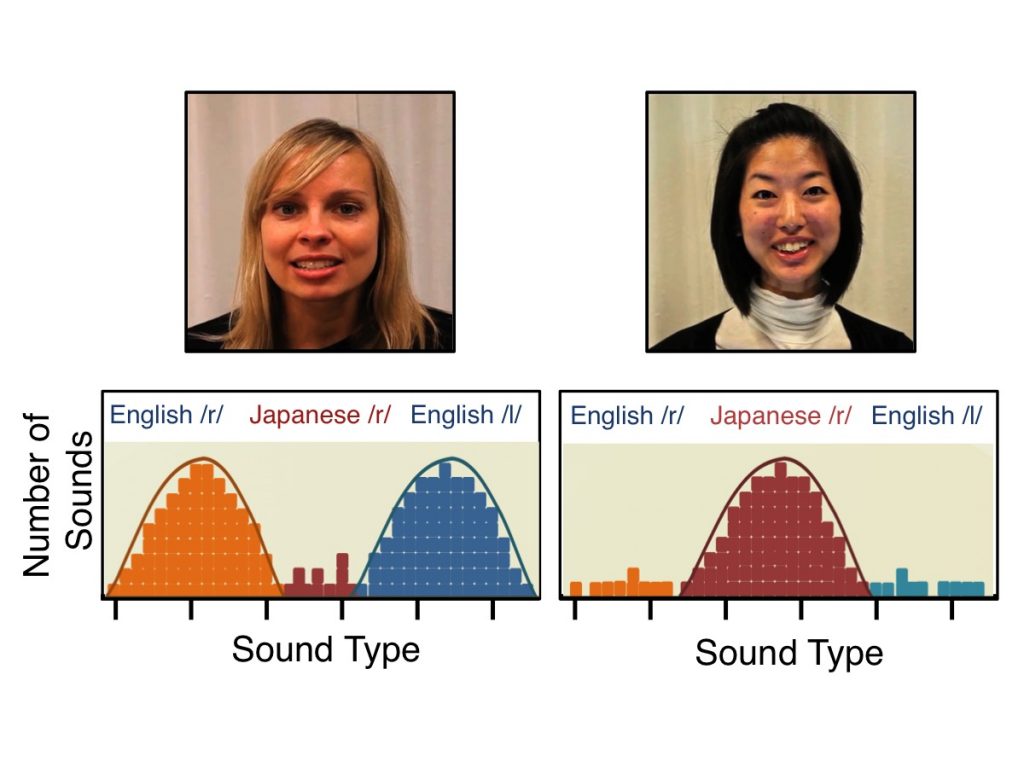
In the video, you saw what an infant might hear when interacting with an adult. You heard two women speaking to babies. One of them spoke in English, and the other one in Japanese.
As babies listen to speech, they compute statistics on the sounds that they are hearing. For example, babies who listen to English are able to determine that the English /r/ and /l/ are two distinct sounds. Think of the words “rake” and “lake,” or “ramp” and “lamp.” Both pairs of words only differ in the first sound, but they have different meanings. Japanese, on the other hand, does not use the sounds /r/ or /l/, but rather uses a hybrid sound, the Japanese /r/ (which does not exist in English).
To see how babies track statistics, look at the graph. The different “sound types” are shown in different colors. The English /r/ is shown in orange, the English /l/ is shown in blue, and the Japanese /r/ in red. First, look at the height of the orange, blue, and red curves under the English-speaking woman. You will see that the orange and the blue curves are high, and the red curve is very low. Over time, English-learning babies hear many examples of the English /r/ and /l/, and very few examples of the Japanese /r/. They learn that /r/ and /l/ are two distinct sounds, or phonemes in English, and they construct two separate phonemic categories, one for the English /r/ and one for the English /l/. Because English-learning babies do not hear many examples of the Japanese /r/, they do not build a phonemic category to represent that sound. Japanese babies show the opposite pattern. Look at the height of the orange, blue, and red curves under the Japanese-speaking woman. The orange and the blue curves are low, and the red curve is high. This is because Japanese babies hear many examples of the Japanese /r/, and not very many examples of the English /r/ and /l/. Japanese babies learn that the Japanese /r/ is a phoneme in Japanese. Because they do not hear many examples of the English /r/ and /l/, they do not form categories for these sounds. The English /r/ and /l/ are not phonemes in Japanese.
This kind of sound-pattern tracking is called statistical learning.
-
- Categorization
- grouping together the same sounds, and distinguishing them from other sounds
- Phoneme
- the smallest unit of speech (a sound)
- Sensitive period
- a time in development when the brain is especially ready to learn a skill
- Speech perception
- listening to speech
- Speech production
- speaking
- Statistical learning
- computing how likely it is that certain events (in this case sounds or syllables) occur compared to others